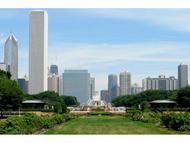Urban Heat Island Effect 2
- By:
- Edward A. Reid Jr.
- Posted On:
- Sep 3, 2019 at 7:41 AM
- Category
- Climate Change
“An urban heat island (UHI) is a metropolitan area which is significantly warmer than its surroundings. According to the EPA, many U.S. cities have air temperatures up to 10°F (5.6°C) warmer than the surrounding natural land cover. This temperature difference usually is larger at night than during the day and larger in winter than in summer, and is most apparent when winds are weak. The main causes are changes in the land surface by urban development along with waste heat generated by energy use. As population centers grow, they tend to change greater areas of land which then undergo a corresponding increase in average temperature.” Source
Recently there has been renewed interest in the Urban Heat Island Effect, particularly how it affects the temperature measurements used to calculate the global average near-surface temperature. Bob Tisdale performed a series of analyses of “adjusted” data obtained from Berkeley Earth. These analyses demonstrated that for many of the most populace nations of the globe and for the globe as a whole, the average minimum daily temperature is rising approximately twice as rapidly as the average daily maximum temperature. Much of this difference is due to mass of various types located adjacent to the measuring stations. In the most populace nations of the globe, this mass is frequently associated with urban structures, including buildings, roadways and sidewalks. Heat rejected by the buildings, vehicles and other energy consuming equipment add to the temperature difference.
Analysis of data from China suggests that daily average minimum temperatures are increasing approximately four times as rapidly as predicted, compared with daily average maximum temperatures. The researchers estimate that approximately 50% of the warming reported for China over the past 80 years is the result of UHI bias. It is reasonable to assume that such UHI bias affects the data collected in other nations, though perhaps not to that extent.
The magnitude of the UHI effect has significant technical policy implications. Accurately measuring global climate change requires that the temperature measurements not be affected by UHI, since UHI is a very localized phenomenon affecting a very small percentage of global land area, while scientific interest is in changes which are global in scope. UHI is a local phenomenon, superimposed upon a global phenomenon. Temperatures in the UHI are obviously of interest to the occupants of the UHI but are not indicative of the temperatures in the massive areas unaffected by the UHI effect.
The magnitude of the UHI effect also has significant social policy implications. Environmentalists are promoting social policies which would cause relocation of suburban and rural populations to cities. However, as noted above, growth of urban areas leads to increased temperatures in the UHI, in addition to temperature changes in the surrounding areas. These effects might be offset to some degree by urban design, more efficient buildings, more reflective structural surfaces, elimination of internal combustion engine vehicles, etc. However, it is unlikely that some level of additional temperature increase in the UHI could be avoided. It is also unlikely that the increases in temperatures in the UHI would be offset by temperature decreases outside the UHI.
It seems logical that the technical and technical policy issues discussed above should be understood and dealt with before significant social policy changes are implemented, to assure that the social policy changes do not produce adverse results.


